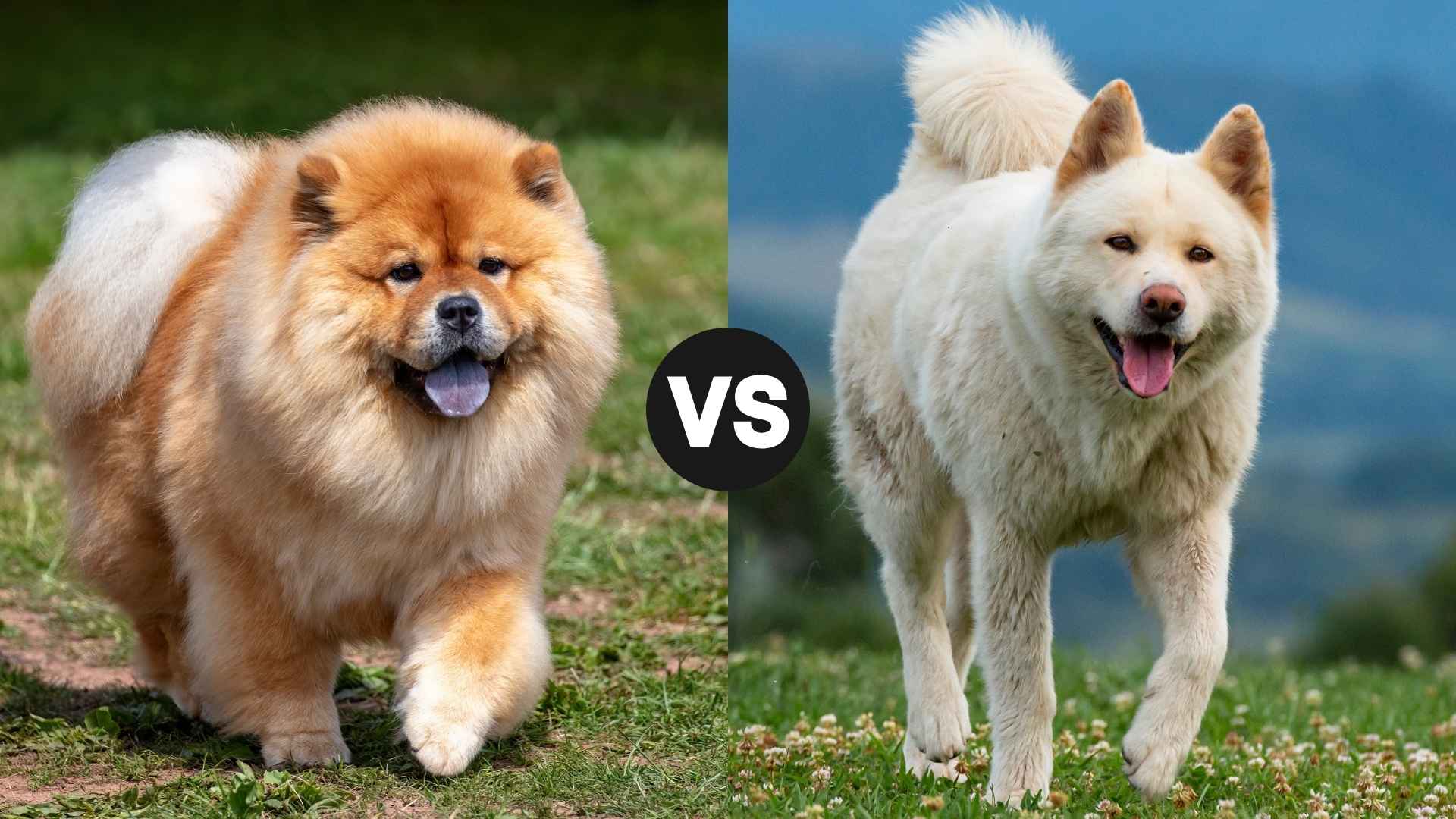Fluffy, fierce, and full of personality, both the Akita and Chow Chow are majestic breeds that look like they belong in ancient legends.
Their dignified expressions and thick coats give them a regal air, but don’t let their lion-like manes or wolfish stares fool you—these dogs are deeply loyal and protective companions. Still, owning one isn’t just about picking the fluffier face.
These two breeds may appear similar, but they come from very different worlds with contrasting temperaments, energy levels, and care needs. The Akita hails from Japan as a courageous and reserved guardian, while the Chow Chow comes from China, known for its aloof demeanor and independent streak. Both can be fantastic companions, but only if their personalities mesh with your lifestyle.
So, which ancient warrior is right for you—the silent, stoic Akita or the proud, lion-like Chow Chow? We’ll dive deep into temperament, training, grooming, and more to help you make an informed (and heartfelt) decision.
Akita vs. Chow Chow
Size and Weight Differences
Let’s dive into the size and weight differences between two of the most ancient (and majestic) flufflords: the Akita and the Chow Chow.
Akita
Hailing from snowy northern Japan, the Akita was bred to hunt wild boar, elk, and even bears. Yes, bears. These Japanese dogs were the samurai sidekicks—brave, loyal, and quiet. The famous Hachikō, an Akita, waited at a train station every day for his deceased owner for 9 years. If that doesn’t pull your heartstrings…
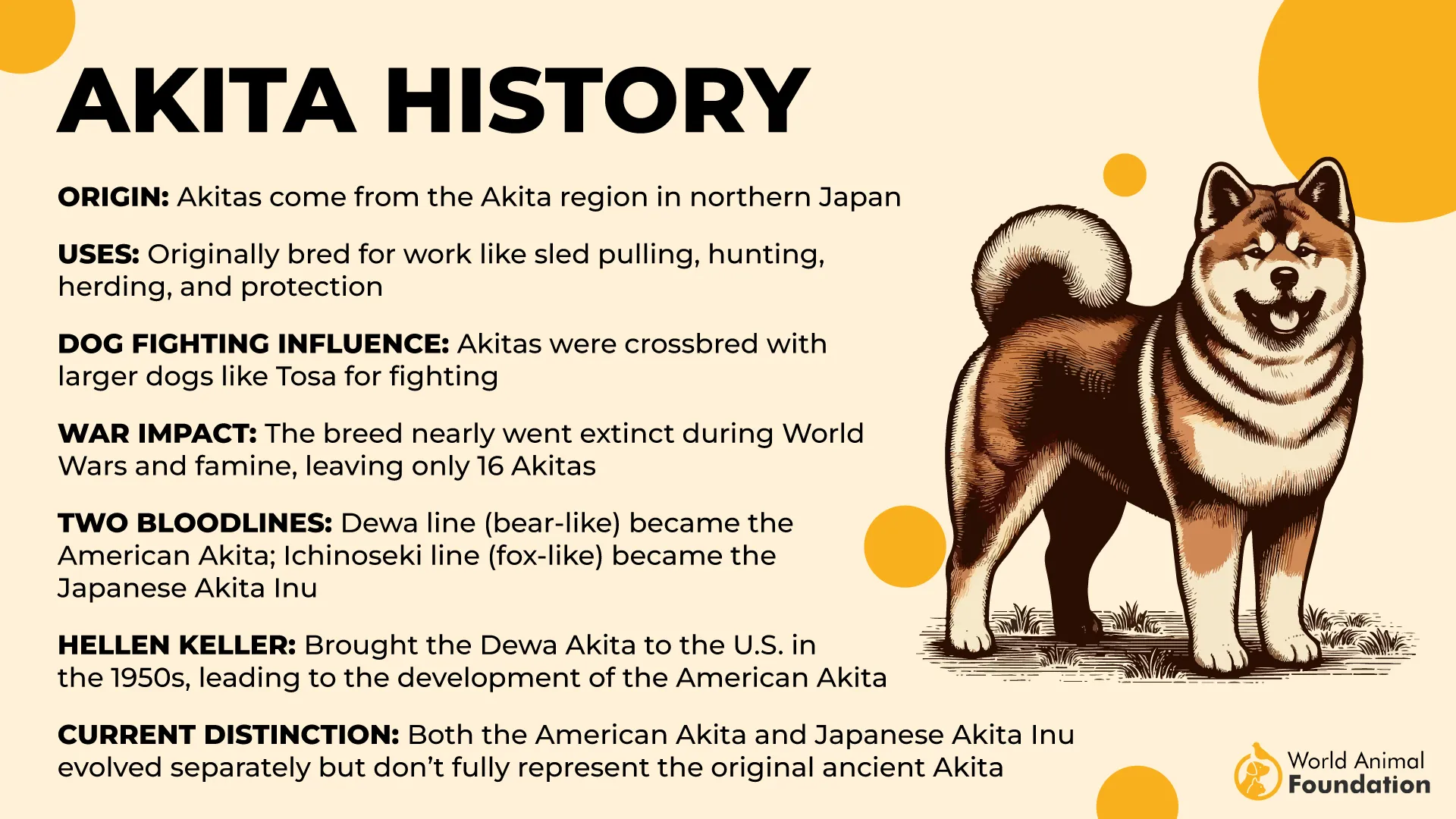
According to Wikipedia, Helen Keller is recognized for introducing the Akita breed to the United States after receiving two Akitas from the Japanese government in 1938. The Akita is like that quiet bodyguard you’d trust with your life. Large, powerful, and athletic, these dogs were built for strength—and it shows.
Height: 24–28 inches
Weight: 70–130 pounds
Vibe: “Don’t mess with my people. Also, I may silently judge you.”
In 2020, the American Kennel Club officially recognized the American Akita and the Japanese Akita as separate breeds, meaning crossbreeding between the two is no longer permitted. They’re thick, fluffy tanks with a fox-like face and muscles under the floof.
Chow Chow
The Chow Chow has been around so long that it probably co-starred with emperors in dynastic selfies. Bred in ancient China as palace guards, hunting companions, and even cart pullers, these dogs were considered treasures of the imperial courts.
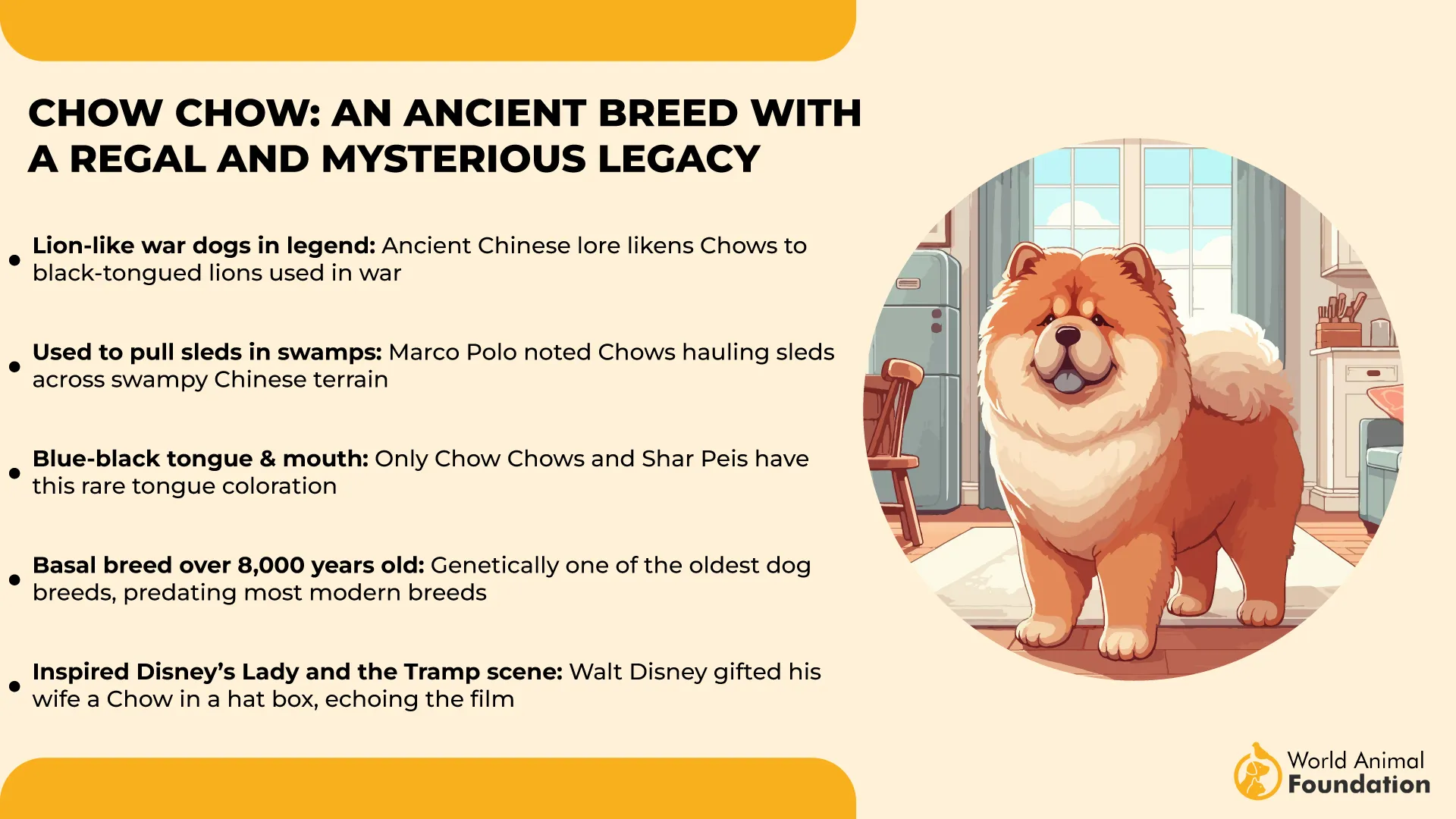
If the Akita is your bodyguard, the Chow Chow is the royal family member who prefers to rule from the sofa, draped in velvet, thank you.
Height: 17–20 inches
Weight: 45–70 pounds
Vibe: “I’m not stubborn. I’m just always right.”
Shorter and squarer than the Akita, but that lion-like mane gives off major “mini bear emperor” energy.
Temperament and Personality Traits
Let’s talk temperament and personality traits — where the Akita is the stoic samurai of the dog world, and the Chow Chow is your moody royal who’s not impressed with your treat tricks. Both are stunning and ancient, but definitely not your average golden retriever personalities.
Akita
Think of the Akita as your strong, silent guardian — loyal to the core, deeply affectionate with its family, and suspicious of strangers. They’re often described as cat-like in their independence and noble in demeanor.
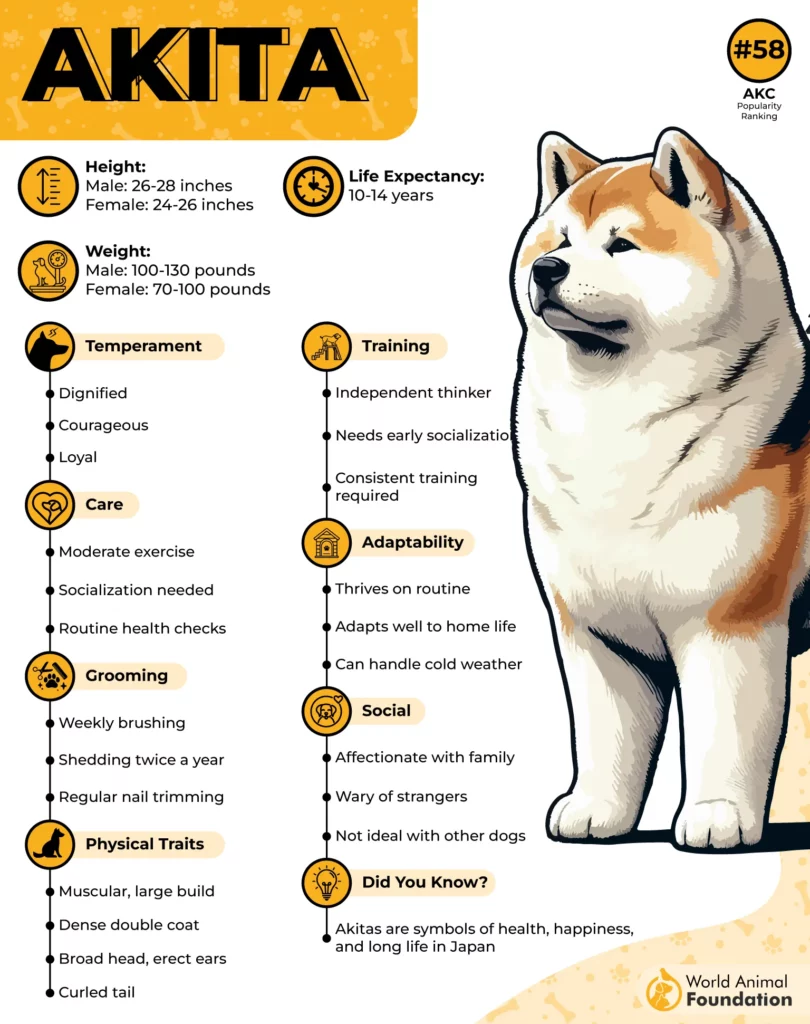
Loyalty Level: Off the charts. Once you’re in, you’re in for life.
Affection: Reserved in public, warm and cuddly with their people.
With Strangers: “Who sent you?” vibes. Very watchful and protective.
Personality in a Nutshell: Calm, confident, brave, and occasionally stubborn — like a warrior in a fur coat.
Akita’s vibe: “I love you, but don’t expect a performance. I show my affection with protection.”
Chow Chow
Chow Chows are the dignified introverts of the dog world. They’re often compared to cats — independent, aloof, and not easily impressed. They love their people in a quiet, reserved way, and don’t do the whole “clingy companion” thing.
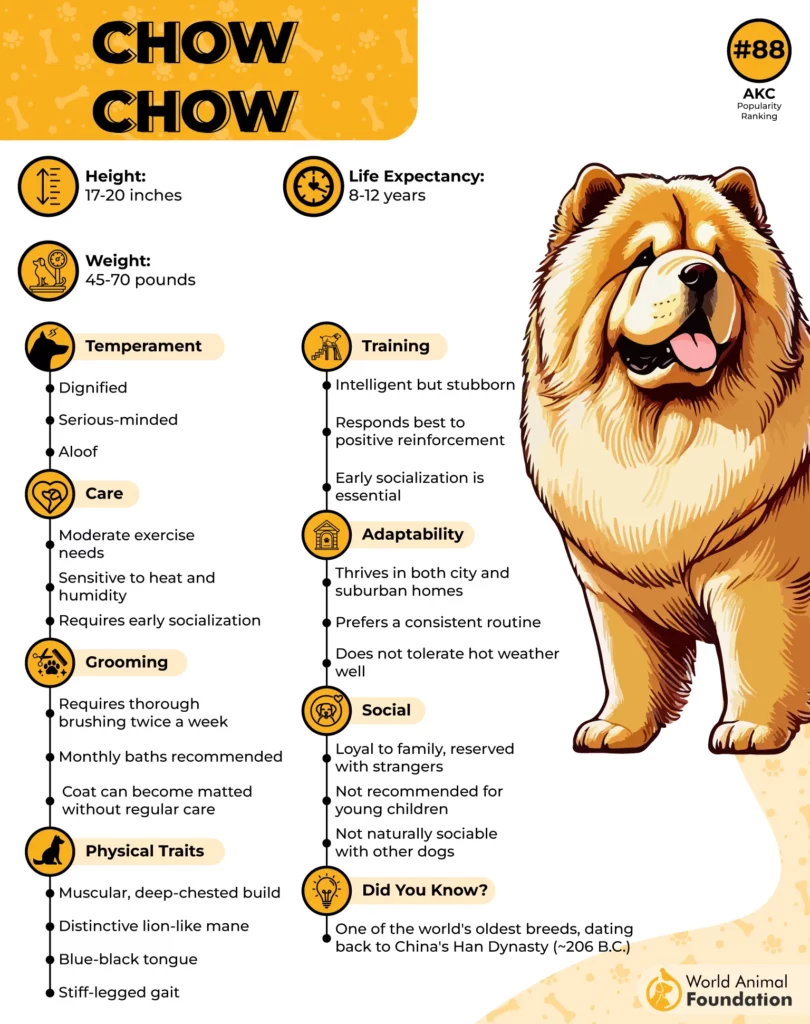
Loyalty Level: Unwavering loyalty, but don’t expect tail-wagging every 5 minutes.
Affection: Selective. If they like you, it’s a high honor.
With Strangers: “No autographs, please.” Very reserved and protective around strangers, according to the American Kennel Club (AKC).
Personality in a Nutshell: Proud, independent nature, dignified, and sometimes stubborn. A true aristocrat in fur.
Chow Chow’s vibe: “I’m not cold—I’m just above you. And I mean that in the nicest possible way.”
Trainability and Intelligence
Let’s explore the trainability and intelligence of the Akita and Chow Chow—two ancient fluff-lords who each think they’re a genius… but in very different ways.
Akita
Make no mistake: the Akita is smart. Sharp as a samurai sword. But here’s the twist—he’s also incredibly independent and stubborn. Training an Akita is less about teaching and more about negotiating terms with a very furry CEO.
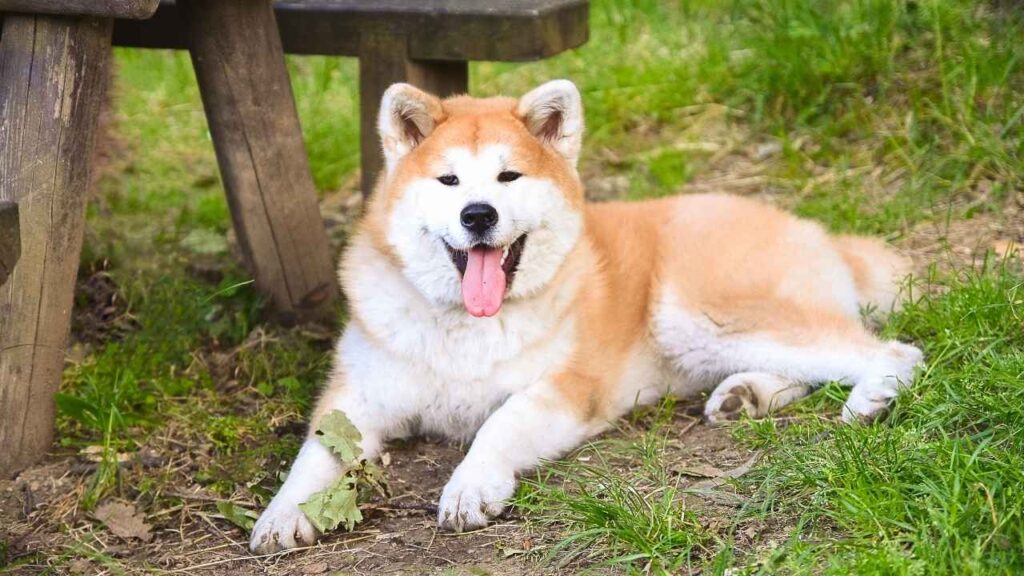
Intelligence: High—knows what you want.
Obedience: Moderate—might do it if it aligns with their brand.
Best Approach: Calm authority, firm boundaries, and… meat-based bribery.
Chow Chow
The Chow Chow is your stoic, brooding roommate who might help out… but only if it doesn’t interrupt their nap. They are intelligent, but oh-so independent. You don’t train a Chow Chow—you propose ideas and hope they approve.
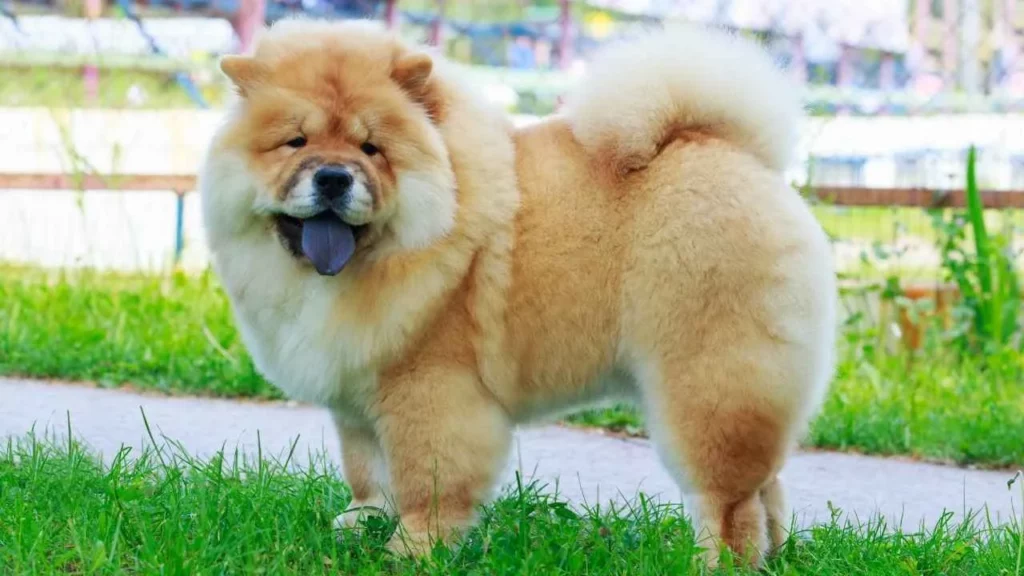
Intelligence: Medium to high—they know more than they let on.
Obedience: Low—unless they happen to agree with your request.
Best Approach: Keep training short, positive, and dignified—they don’t like being embarrassed.
Energy Levels and Exercise Needs
Let’s get into the energy levels and exercise needs of the Akita and Chow Chow — two ancient breeds that look like they’d rather pose for a royal portrait than chase a tennis ball.
Akita
Akitas are calm and composed indoors, almost zen-like. But don’t be fooled—these dog breeds were bred to hunt bears. They have powerful bursts of energy and need regular physical and mental stimulation to avoid turning your backyard into a digging zone.

Energy Level: Moderate
Exercise Needs: 1–2 hours daily (walks, hikes, playtime)
Play Style: Reserved, but loves structured activities
Akita tip: Think long walks, not dog park chaos. They’re not into social hour.
Chow Chow
Chows are the couch potatoes of the ancient world. Sure, they’ll take a dignified stroll around the palace (aka your block), but they’re not into anything resembling cardio.
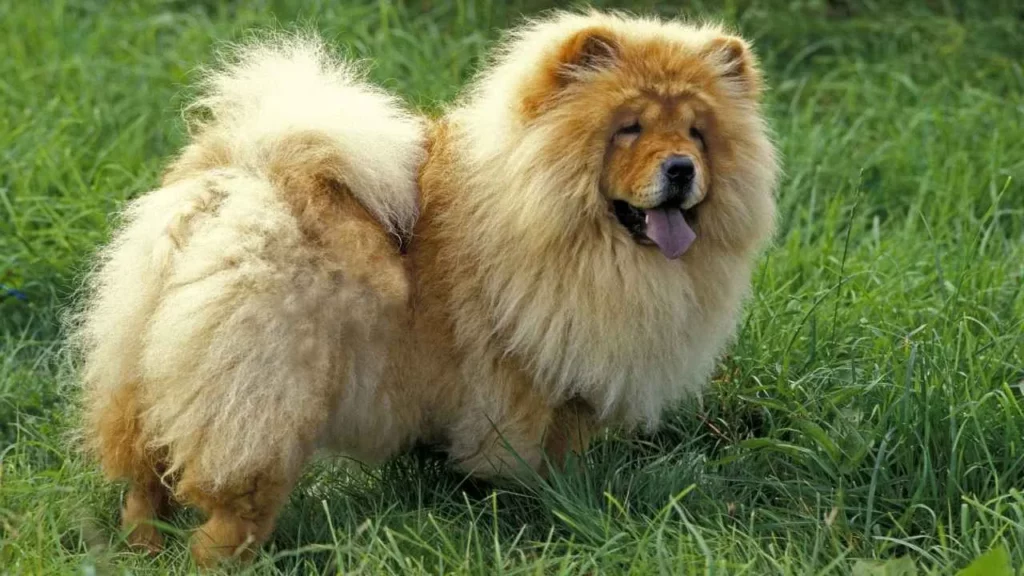
Energy Level: Low to moderate
Exercise Needs: PetPlan notes that despite being a large breed, Chows typically require only a moderate amount of exercise—about 40 to 60 minutes daily is usually sufficient.
Play Style: “Catch me napping, not catching a frisbee.”
Chow Chow tip: Short walks and calm play = ideal. And forget fetch. They find it undignified.
Playfulness and Activity Preferences
Let’s dig into the playfulness and activity preferences of the Akita vs. Chow Chow. Because looking regal isn’t easy — someone’s gotta keep that fluff fluffed and those muscles toned!
Akita
Akitas aren’t your classic goofy ball-chasers, but they do have a play button — it’s just a bit hidden under all that serious business energy. When they get in the mood, they love structured play: tug-of-war, obedience games, and yes, sometimes a good chase.
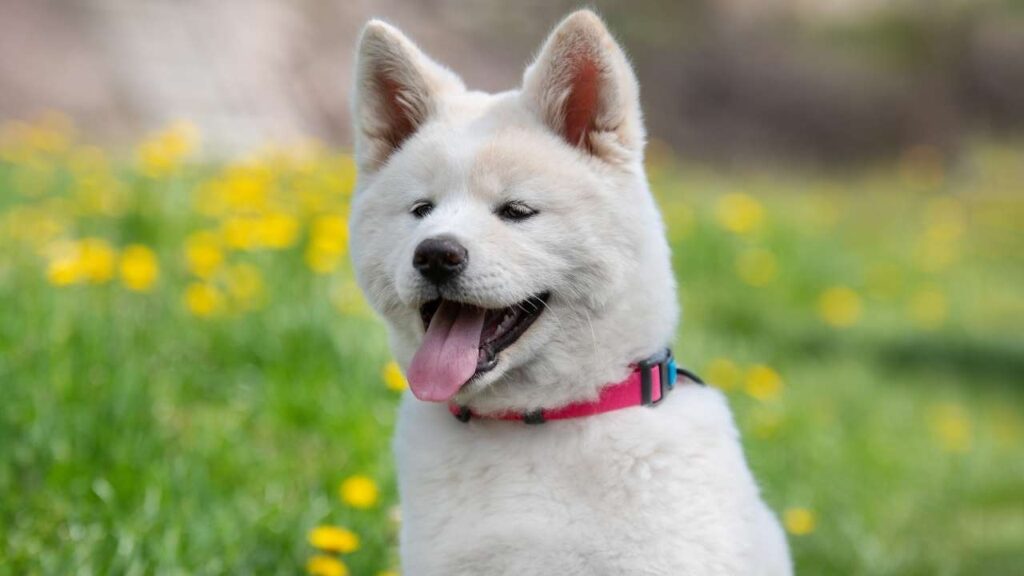
Play Style: Focused, purposeful, sometimes goofy (surprise!).
Activity Preferences: Hiking, exploring, learning new tricks, and occasional zoomies (bear hunting instincts, remember?).
Chow Chow
The Chow Chow is the king or queen of chill. Playfulness isn’t their forte; they’d rather watch the squirrels from the throne (your couch). But don’t mistake them for boring — they have bursts of energy and like gentle play, especially if it involves treats or a comfy blanket afterward.
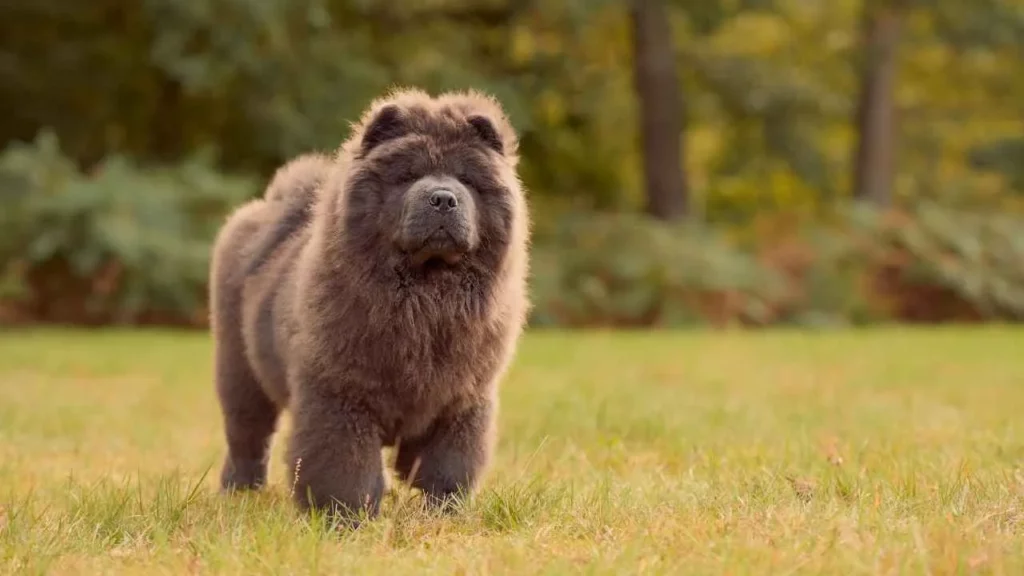
Play Style: Laid-back, prefers gentle games, and tolerates mild playfulness.
Activity Preferences: Short walks, sniffing the royal grounds, and casual lounging.
Dietary Needs and Weight Management
Let’s dish out the details on the dietary needs and weight management of the Akita and the Chow Chow, because beneath all that regal fluff and majestic stare is a very real love for food… sometimes a little too much.
Akita
Akitas are robust dogs with hearty appetites but can be prone to weight gain if overindulged or under-exercised. Their diet should be high-quality, protein-rich, and balanced to fuel their muscular bodies.
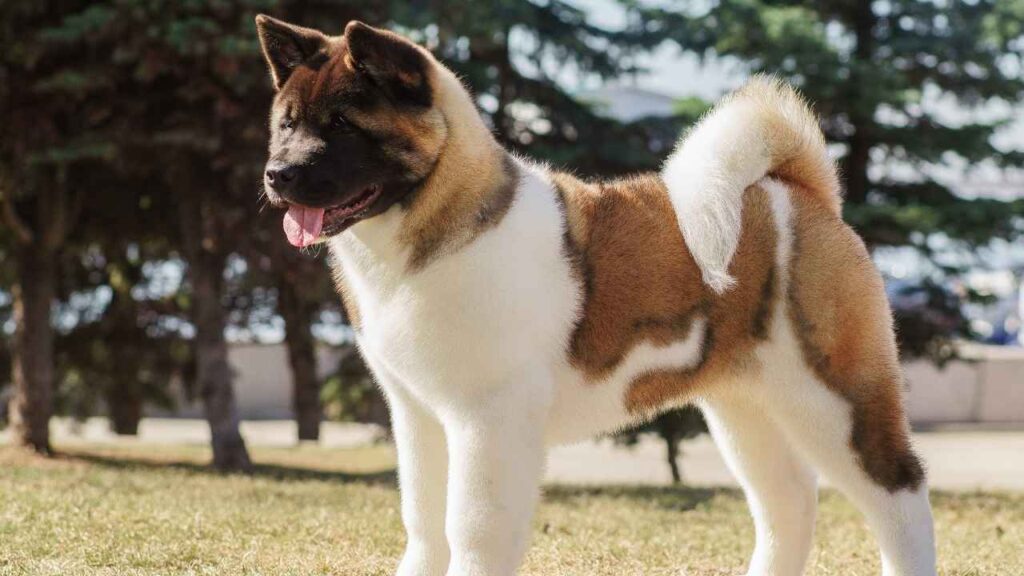
Diet Tips: Lean meats, balanced kibble, avoid fillers, and excessive treats.
Weight Watch: Keep an eye on portion size; these guys won’t always self-regulate.
Chow Chow
Chow Chows can be a bit picky eaters with a tendency to gain weight if not properly managed, especially since their activity level is low. They need a nutrient-rich diet with controlled portions to avoid the dreaded “couch potato” extra pounds.
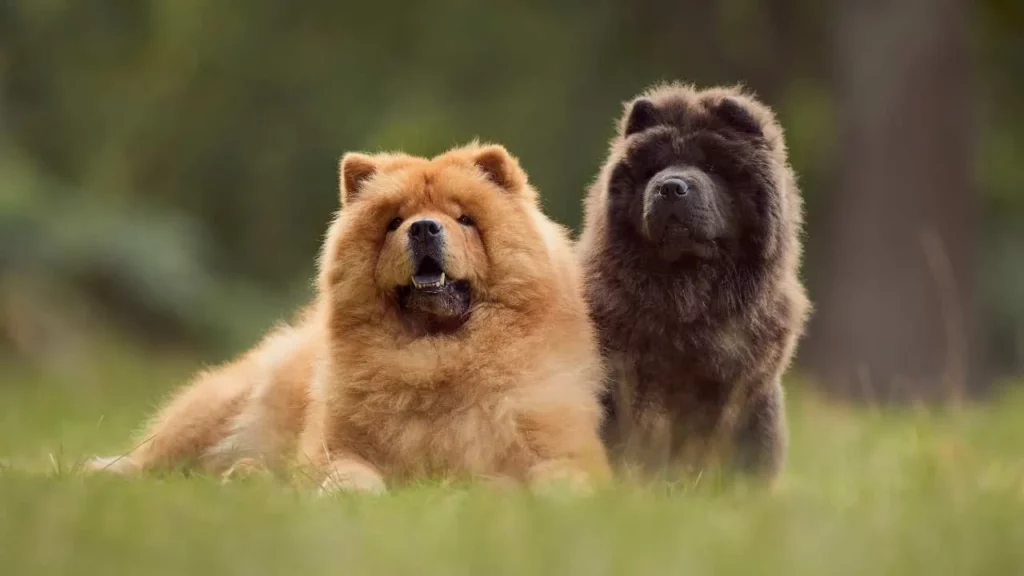
Diet Tips: High-quality, moderate-calorie food with balanced fats and proteins.
Weight Watch: Regular meals, avoid free-feeding, and keep treats in check.
Health Conditions and Lifespan
Alright, let’s dig into the health, lifespan, allergies, and grooming needs of the Akita and Chow Chow — because behind that royal fluff and noble stare lies a whole lot of care (and maybe a few vet visits).
Akita
Akitas are generally healthy dogs with a lifespan of 10 to 15 years — pretty respectable for a big, muscular breed. However, they do have a few health quirks that potential owners should know:
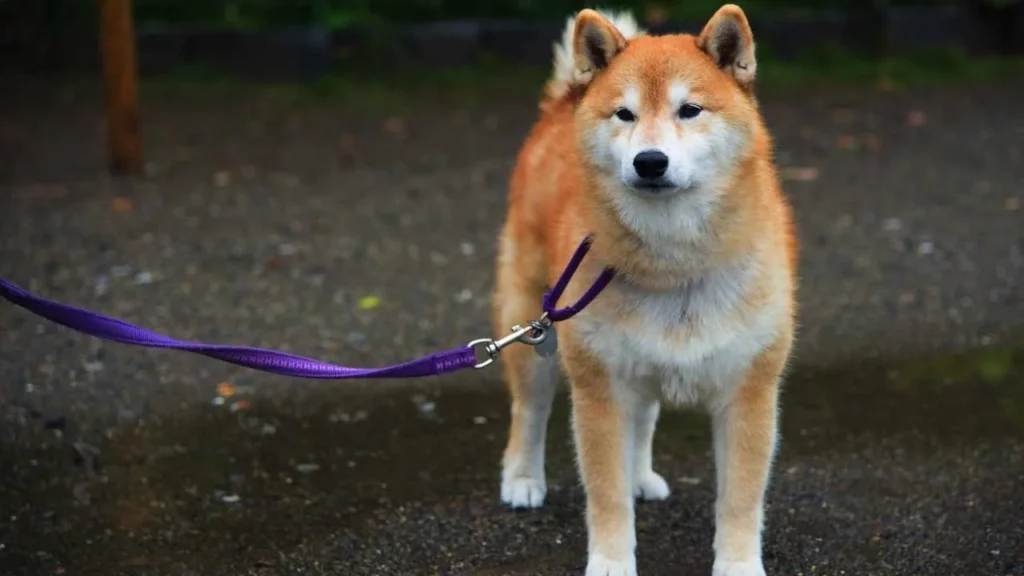
Hip Dysplasia (those powerful legs need strong joints!)
Progressive Retinal Atrophy (a fancy term for some eyesight problems)
Autoimmune Disorders (because their immune system can sometimes be a bit too enthusiastic)
Hypothyroidism (when the thyroid decides to slack off)
Veterinarian Visits: Routine check-ups and eye/hip screenings are key.
Chow Chow
Chow Chows typically live around 9 to 15 years. They’re charming but prone to some breed-specific health challenges:
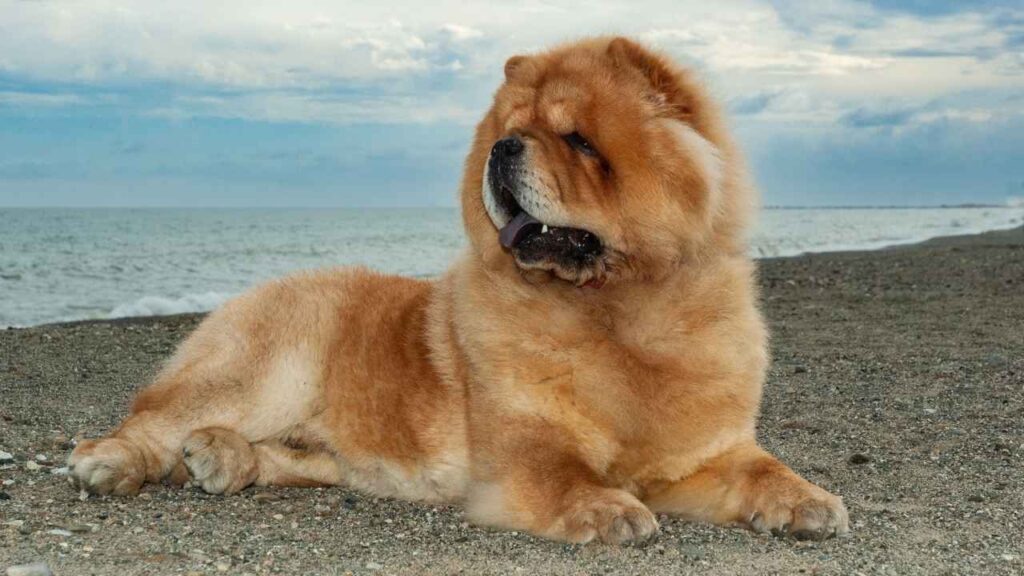
Hip Dysplasia (a common culprit in big dogs)
Elbow Dysplasia (because sometimes one joint just isn’t enough)
Entropion (eyelids that roll inward — ouch!)
Thyroid Problems
Gastric Torsion (Bloat) — emergency alert!
Skin Issues due to their thick coat
Veterinarian Visits: Regular eye and joint checks, plus watch for skin irritations.
Allergies and Grooming Requirements
Akita
Akitas have a dense double coat that sheds heavily, especially during “blowout” seasons (spring and fall). They’re generally not considered hypoallergenic, so sniffles and sneezes may happen if you’re sensitive.
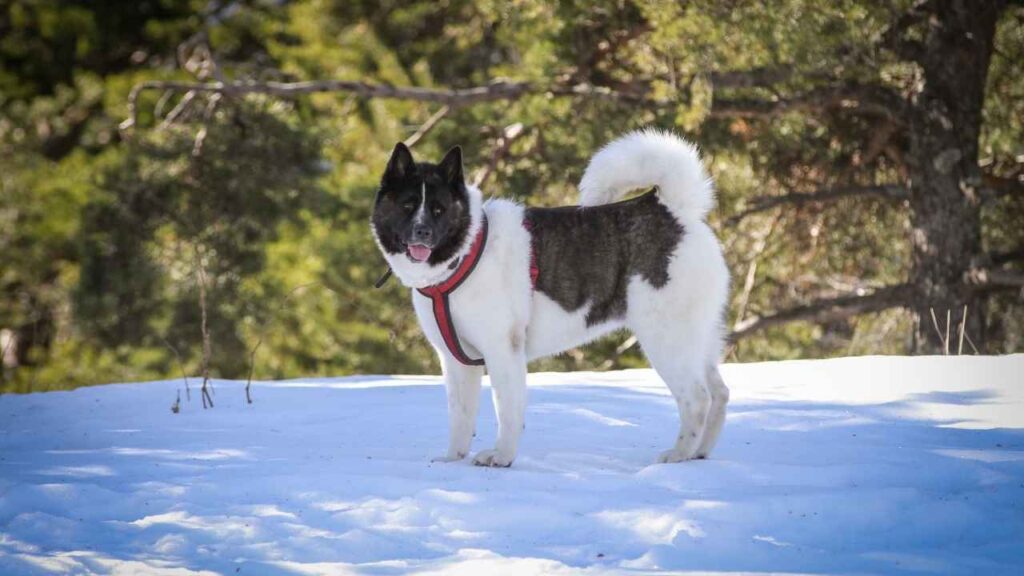
Allergies: Can be prone to some skin allergies and sensitivities.
Grooming Needs:
Weekly brushing to manage shedding.
Extra during heavy shedding season (prepare for fur tumbleweeds!).
Occasional baths to keep the coat and skin healthy.
Akita’s motto: “I’m high maintenance, but worth every fur tumbleweed on your floor.”
Chow Chow
The Chow Chow’s lion-like mane is beautiful but requires regular grooming commitment. They also aren’t hypoallergenic and may cause reactions in sensitive noses.
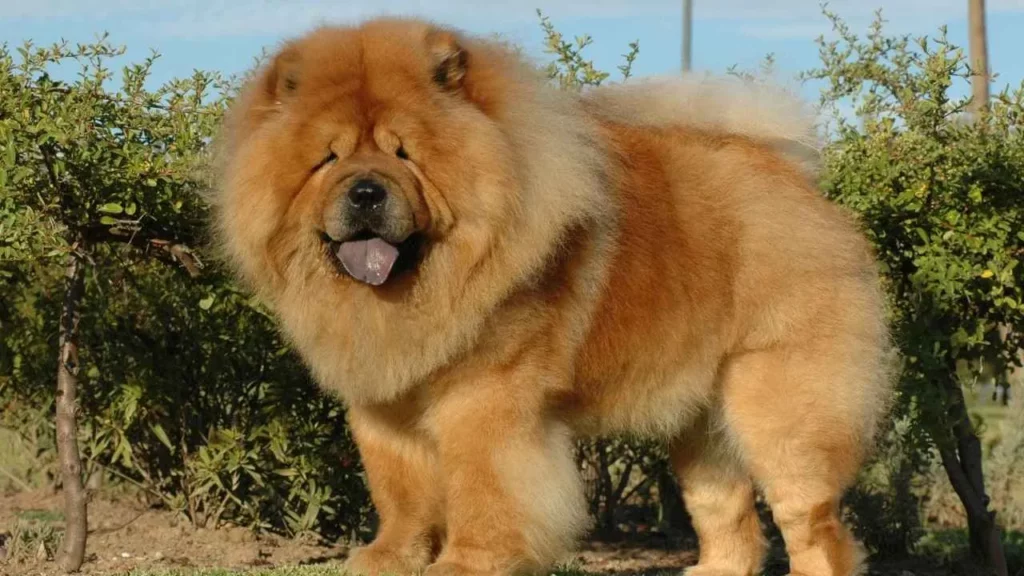
Allergies: Prone to skin allergies and hot spots, especially with their thick coat trapping moisture.
Grooming Needs:
Daily to every-other-day brushing to avoid mats and tangles.
Frequent coat checks to prevent skin issues.
Regular baths and professional grooming during heavy shedding seasons.
Watch for moisture and irritations, especially around folds and undercoat.
Chow Chow’s royal decree: “You will brush me daily — or face the wrath of the fluff.”
Conclusion
When comparing the Akita vs Chow Chow, both dog breeds require early socialization and proper socialization to live harmoniously with children, other pets, or be the only pet. The American Akita and Japanese Akita differ slightly in temperament, but both need patience from the owner during puppyhood, as they can be rough and independent. These double-coated dogs thrive in cold weather, and whether purebred or mixed breed, choosing a responsible breeder or adopting from a shelter matters.
They are not ideal for every lifestyle—Akitas may be more affectionate, while Chow Chows tend to be aloof. Both can be protective, sometimes wary of other dogs, and known to be selective with human interactions. They don’t typically enjoy wearing clothes and might not be very vocal, but will bark if needed. These strong, noble animals need a secure house, committed parents, and consistent training. Whether in America or elsewhere, understanding each breed’s average needs is key to a rewarding companionship.


